Lake Powell is located in Northern Arizona and Utah. It was created by the Glen Canyon Dam on the Colorado River, and it is the second-largest reservoir in the United States. Its resources service millions in seven states, but there is a crisis occurring in these most threatened states, and it needs to be explained.
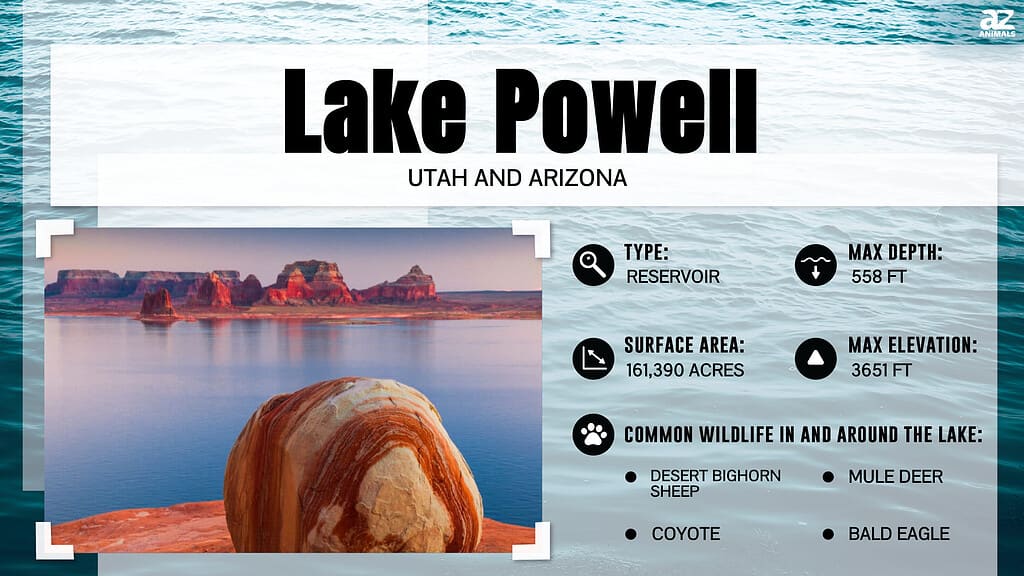
The western United States has been plagued by drought for many years. Climate change has exacerbated the issue, and in recent years, the drought in the Southwest has been unprecedented. It’s considered a megadrought because it has spanned decades, and it’s the driest it’s been in the west in a thousand years.
The Colorado River is one of the main lifelines in the western United States, and it’s subject to the laws of the federal government as interpreted by seven states that play host to the river. That makes action plans complicated due to the coordination efforts that have to take place, but good progress has been made on that front, and a new set of rules is expected by 2026.
What exactly is the Lake Powell water crisis, and how does it affect the seven states most threatened?
The Lake Powell Water Crisis Explained
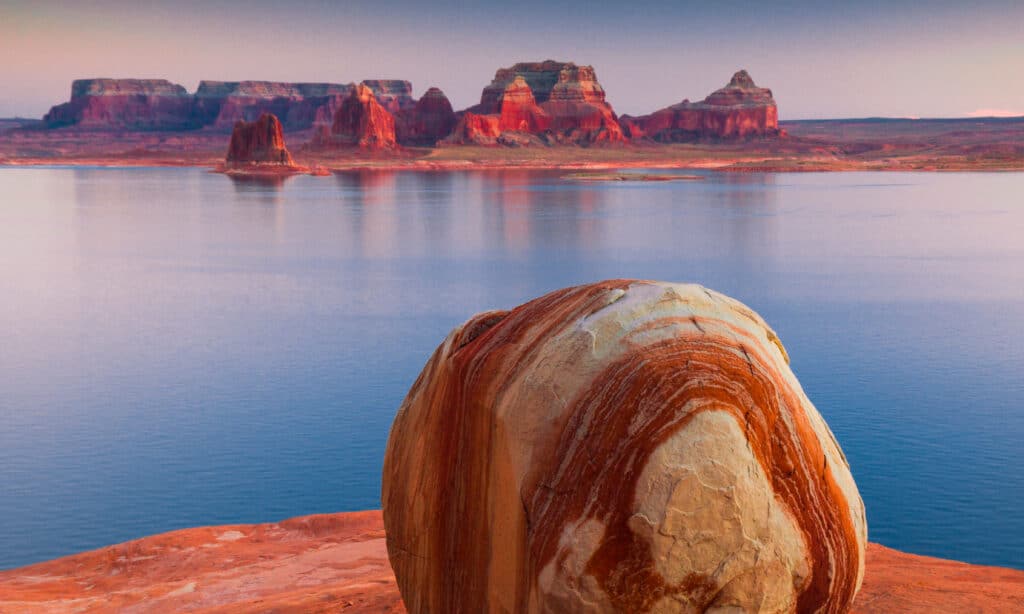
The Lake Powell water crisis has a cascade effect along the entire Colorado River.
©iStock.com/Lucas Cometto
Lake Powell now stands about 100 feet shallower than it did a few years ago, and it is currently hovering around 25% capacity. Decreased snowmelt and rainfall in the Upper Colorado watershed that feeds Lake Powell are responsible for this burgeoning emergency.
The healthy flow of water needed to sustain both the river and the states that depend on it is now being decreased drastically to try and preserve a semblance of the lake. The lake’s inflows are expected to run at only 69% capacity this summer.
The dam is controlled by the federal government, like most dams in the United States. The Interior Department is slated to come up with an action plan explaining how to handle the Lake Powell water crisis for the seven states most threatened.
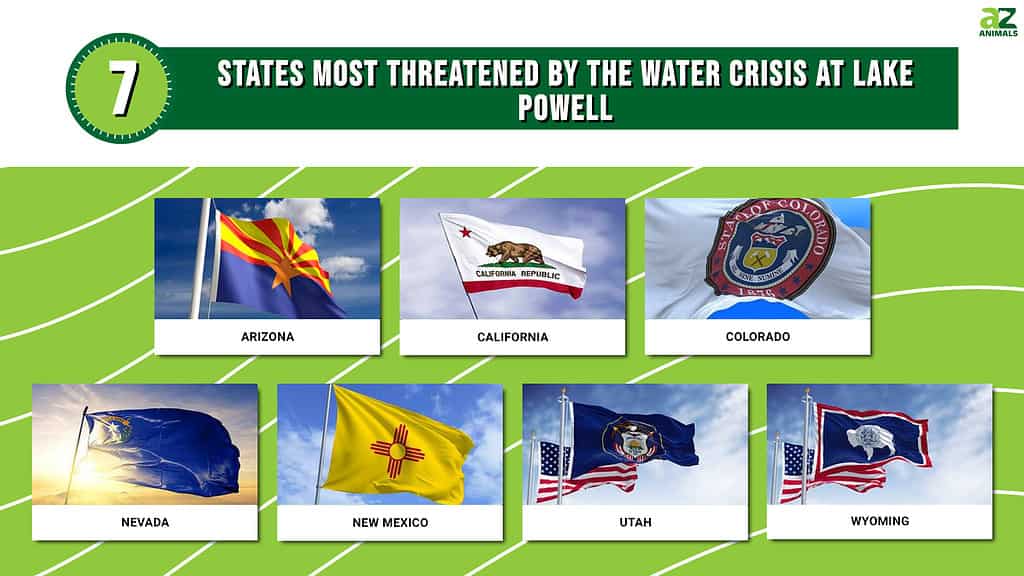
While water is still being released to Lake Mead downstream, the Lake Powell crisis has a cascade effect on other important power and water resources used by some of the seven threatened states. Efforts by reservoirs upstream of Lake Powell have helped to provide an extra few feet of depth, but this isn’t going to be enough in the long term.
When the lake is where it’s supposed to be, it holds enough water to lay a foot of water over Kentucky. A full lake also boasts more coastline than the entire US Pacific Coast. However, efforts are being made to restore the water levels in Lake Mead before levels are restored in Lake Powell; that’s if the opportunity ever presents itself.
The Lake Powell Water Crisis Creates An Electricity Crisis
The water levels of the lake have fallen so low recently that the power plant on the lake had to be shut down. In general, the dam has lost around 16% of its ability to produce power, and this puts millions of people in jeopardy. The dam is their primary energy source.
If the lake permanently loses its ability to generate power, millions of people reliant on it will have to switch to fossil fuels or pay inflated rates for their electricity.
If conditions don’t improve with the decrease in water level, the dam may lose its ability to produce any power by January of 2023.
How Low Can Lake Powell Get?
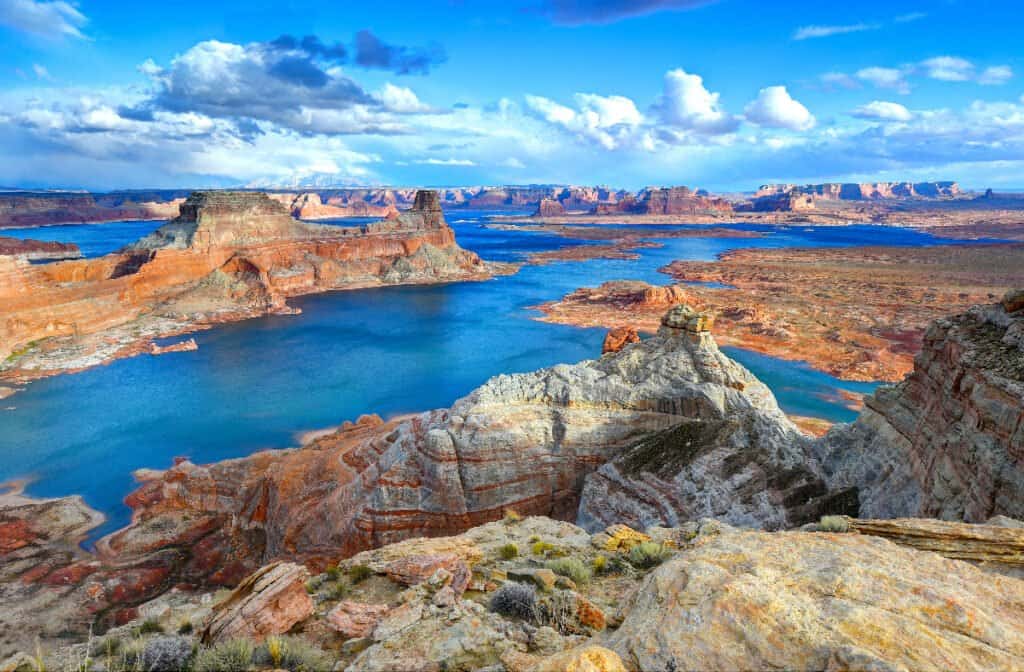
There always has to be a certain amount of water that flows out of Lake Powell.
©worldswildlifewonders/Shutterstock.com
There always has to be a certain amount of water flowing out of the lake and down the river, no matter how low the lake gets. Lake Powell has only been as low as it is now at its inception over 50 years ago.
When the lake was at its lowest early in 2022, it was only 32 feet away from dropping below the level needed for any type of production of hydropower. The turbines that spin to generate electricity will not be able to function in water any shallower.
How Does Lake Powell Affect the 7 Threatened States?
The seven states threatened by the Lake Powell water crisis are Wyoming, Arizona, California, New Mexico, Utah, Nevada, and Colorado. Each state is affected by the water and energy crisis differently. Fights between states over water rights are heated, but they may be null soon if the resource disappears altogether.
Wyoming provides a large amount of the snow melt-off that feeds the Colorado River, but water restrictions on Wyoming have been proposed so states downriver can get more runoff. This is causing tensions.
California, Nevada, Arizona, and the Water Crisis Explained
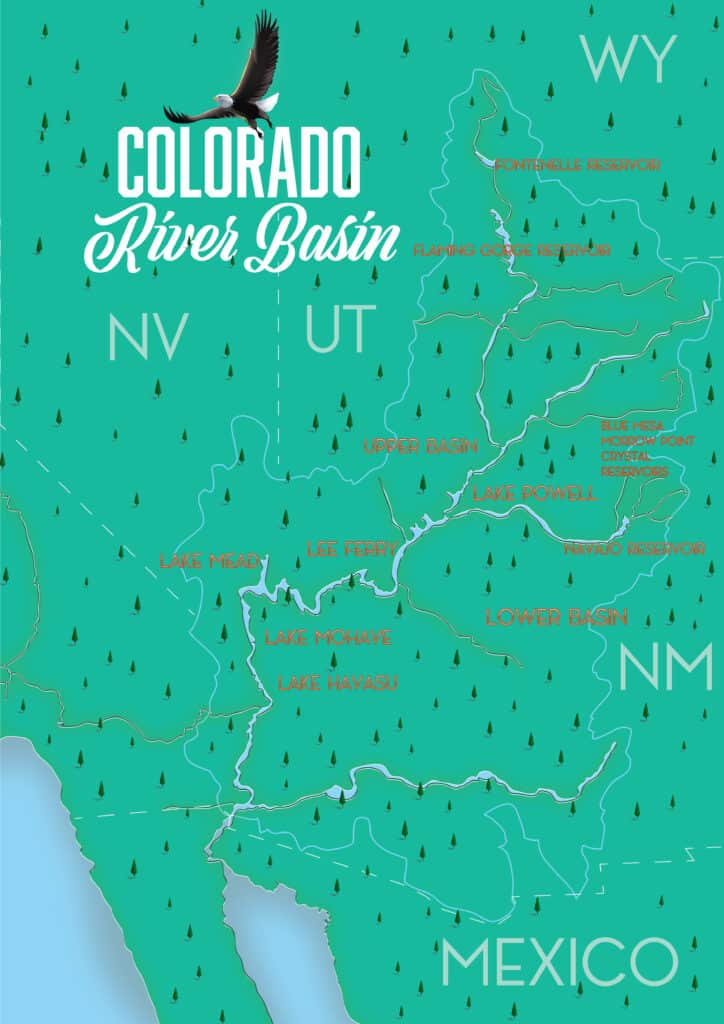
Nevada, Arizona, and California depend on water that flows into the Colorado River Basin.
©Stock Store/Shutterstock.com
The majority of Arizona is located in the Colorado River Basin below Lake Powell. The higher Colorado Plateau and other geographical features feed the Colorado River Basin.
Not only do Arizona, California, and Nevada rely on power and water from Lake Powell, but they also rely on Lake Mead for the same resources. This is problematic because Lake Mead relies on the health of Lake Powell, as the water released from the latter affects the former.
Around 90% of the drinking water consumed in Southern Nevada relies on the Colorado River. Both Lake Mead and Lake Powell meet this demand despite both water resources currently being unsustainable. While electricity production is also a concern for Nevada, the highest priority is maintaining access to potable water for millions of residents.
The situation in California, Nevada, and Arizona has led to the three states making a pact around water conservation and consumption to preserve the resource for everyone. Maintaining enough water to service Arizona is one of the primary concerns about Colorado River projects, including Lake Powell.
Utah and the Lake Powell Pipeline
Despite Arizona, Nevada, and California coming to a conservation agreement, Utah is trying to move ahead with a pipeline that would divert more water from the taxed river. If this pipeline is put into place, it could affect more than 30 million people downstream.
The Effects of the Lake Powell Water Crisis on Indigenous Americans
One-fifth of the water that courses through the Colorado River is supposed to be controlled by 34 various tribes. However, tribes are often not consulted when water management issues are decided. This has led to problems with the accessibility of fresh water and electricity in some homes.
Summary of the Lake Powell Water Crisis Explained
| Problems | Results | Proposals |
|---|---|---|
| Depth: Lake Powell is 100 feet shallower than previous average depth; At 25% capacity only. | Lake Powell has lost 16% of its ability to produce hydroelectric power and is threatened with shutting down power plant. | Restrict water usage in Wyoming so that more water is sent downriver. |
| Inflow: Only 69% of normal expectations | California, Nevada and Arizona have formed a conservation and consumption pact. | Utah builds a pipeline to divert more water to Utah. |
| Arizona, California, and Nevada rely on Lake Powell for water and power; 90% of drinking water in Southern Nevada comes from Lakes Mead and Powell. | ||
| Indigenous tribes are supposed to control 1/5 of the water supply; instead, they are having shortages of water and power. | ||
The photo featured at the top of this post is © iStock.com/Lucas Cometto
Thank you for reading! Have some feedback for us? Contact the AZ Animals editorial team.






